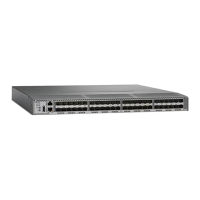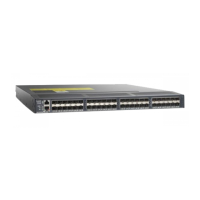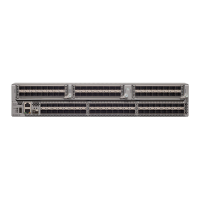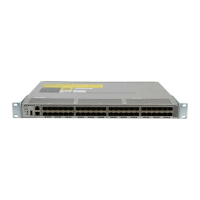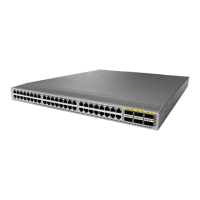Send documentation comments to mdsfeedback-doc@cisco.com
11-131
Cisco MDS 9000 Family Command Reference
OL-8413-07, Cisco MDS SAN-OS Release 3.x
Chapter 11 I Commands
ivr service-group name
ivr service-group name
To configure an Inter-VSAN Routing (IVR) service group, use the ivr service-group name command
in configuration mode. To disable this feature, use the no form of the command.
ivr service-group name service-group
no ivr service-group name service-group
Syntax Description
Defaults Disabled.
Command Modes Configuration mode.
Command History
Usage Guidelines In a complex network topology, you might only have a few IVR-enabled VSANs. To reduce the amount
of traffic to non-IVR-enabled VSANs, you can configure a service group that restricts the traffic to the
IVR-enabled VSANs. A service group is a combination of AFIDs and VSANs. Up to 16 service groups
can be configured. A VSAN or AFID can belong to just one service group. When a new IVR-enabled
switch is added to the network, you must update the service group to include the new VSANs.
There can be a maximum of 128 AFID/VSAN combinations in all service group. However, all 128
combinations can be in one service group.
The default service group ID is 0. The default service group is for all VSANs that are not a part of a
user-defined service group.
Before configuring an IVR service group, you must enable the following:
• IVR using the ivr commit command
• IVR distribution using the ivr commit command
• Automatic IVR topology discovery using the ivr commit auto command.
Using the autonomous-fabric-id (IVR topology database configuration) command, you can restrict
the IVR traffic to the AFIDs and VSANs configured in the service group.
service-group Specifies the service group name.
Release Modification
2.1(1a) This command was introduced.
